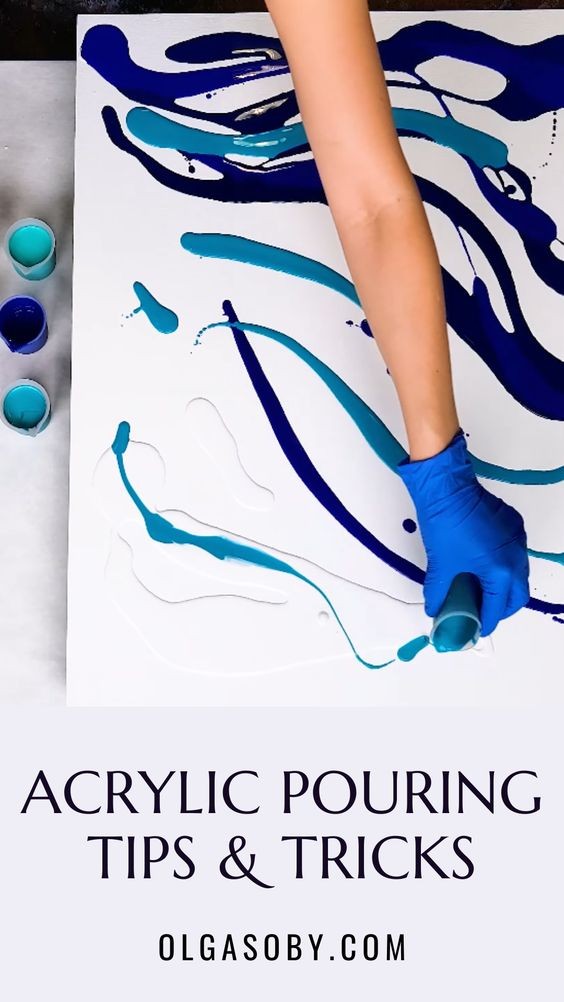Essential Tips & Tricks for Beginners in Acrylic Pouring: Art Tips You Need to Know
Acrylic pouring is a mesmerizing and accessible technique that transforms simple acrylic paints into stunning abstract art. For beginners, mastering the basics can be both exciting and challenging. To help you navigate the world of acrylic pouring, we’ve compiled essential tips and tricks that will set you up for success and enhance your pouring skills. Whether you’re just starting or looking to refine your technique, these tips will guide you towards creating vibrant and captivating artworks.
### 1. **Choose the Right Paint and Pouring Medium**
**Why It Matters* The quality of your paints and pouring medium can significantly impact the outcome of your pour.
**Tip* Use high-quality acrylic paints for vibrant colors and better consistency. Pair them with a pouring medium like Floetrol or acrylic pouring medium to achieve the right fluidity and to help the paint flow smoothly.
### 2. **Prepare Your Surface Properly**
**Why It Matters* A well-prepared surface ensures better paint adhesion and helps achieve the desired effects.
**Tip* Make sure your canvas or surface is clean and primed. For better results, use a base coat of acrylic paint or gesso. This base layer helps the pouring medium adhere and can improve the overall finish of your artwork.
### 3. **Experiment with Paint Consistency**
**Why It Matters* The consistency of your paint affects how it flows and interacts with other colors.
**Tip* Aim for a consistency similar to that of heavy cream. Too thick and the paint won’t flow well; too thin and it may become muddy. Test different consistencies by pouring a small amount of paint to see how it behaves.
### 4. **Mix Your Paints Thoroughly**
**Why It Matters* Properly mixed paints ensure uniform color and avoid unexpected results.
**Tip* Mix your acrylic paint with the pouring medium thoroughly to eliminate lumps and achieve a smooth consistency. Stir gently to avoid introducing air bubbles that can affect the final appearance.
### 5. **Use a Funnel or Cup for Pouring**
**Why It Matters* Controlling the flow of paint helps in achieving more precise and creative effects.
**Tip* Use a funnel or a small cup to pour the paint onto your surface. This allows for better control and can help you layer colors effectively. For different effects, try pouring the paint from different heights or angles.
### 6. **Layer Your Colors Carefully**
**Why It Matters* Layering colors affects how they blend and interact on the surface.
**Tip* Layer your paints in the cup or funnel to create interesting patterns and cells. Pour colors in a specific order or mix them directly on the canvas for unique effects. Avoid overmixing, which can lead to muddy colors.
### 7. **Control the Flow with Tilting**
**Why It Matters* Tilting helps spread the paint and creates interesting patterns.
**Tip* After pouring, gently tilt your canvas to move the paint around. This technique can help you achieve the desired coverage and create organic patterns. Be patient and tilt slowly to control the flow and prevent drips.
### 8. **Create Cells with Cell Activators**
**Why It Matters* Cells add texture and interest to your acrylic pour.
**Tip* To create cells, use cell activators such as silicone oil or dimethicone. Add a few dops to your paint mixture or spray directly onto the wet paint. Cells will start to form as the paint dries, giving your artwork a dynamic and textured look.
### 9. **Avoid Overworking the Paint**
**Why It Matters* Overworking the paint can lead to unwanted effects and loss of clarity.
**Tip* Once you’ve poured and tilted your paint, avoid excessive manipulation. Let the paint flow naturally and allow it to settle on its own. Overworking can cause colors to blend excessively and lose their distinctiveness.
### 10. **Allow Ample Drying Time**
**Why It Matters* Proper drying ensures that the paint sets correctly and maintains its appearance.
**Tip* Allow your artwork to dry completely before moving or handling it. Drying times can vary depending on paint thickness and environmental conditions. Be patient to ensure a smooth and flawless finish.
### 11. **Protect Your Work Area**
**Why It Matters* Acrylic pouring can be messy, and protecting your workspace helps with cleanup.
**Tip* Cover your work area with plastic or old newspapers to catch any drips or spills. Wear gloves and old clothing to avoid getting paint on yourself. Clean up spills promptly to prevent staining.
### 12. **Experiment and Have Fun**
**Why It Matters* Experimentation leads to discovering your unique style and techniques.
**Tip* Don’t be afraid to try new color combinations, techniques, and pouring methods. Each pour is a learning experience, and experimentation can lead to exciting and unexpected results. Embrace the process and enjoy the creative journey!
### Conclusion
Acrylic pouring is a captivating art form that offers endless creative possibilities. By following these essential tips and tricks, you’ll be well on your way to creating beautiful, dynamic artworks. Remember to practice, experiment, and most importantly, have fun with the process. Your unique artistic style will emerge as you explore the fluid and fascinating world of acrylic pouring.
---
Ready to take your acrylic pouring to the next level? Dive into these tips and tricks to unlock stunning results and unleash your creativity! 🎨✨ #acrylicpouringtips #artisticflow #pouringtechniques






